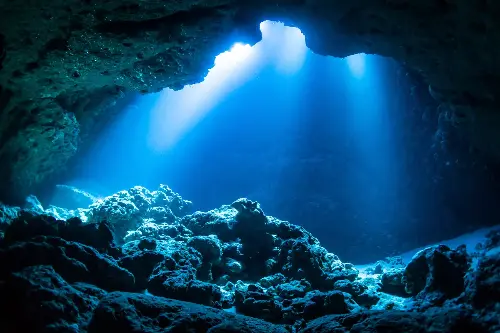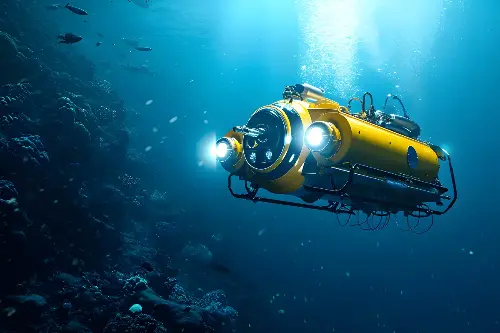Beneath the vast expanse of the world’s oceans lies a realm so alien and unexplored that it rivals the most imaginative science fiction. The deep sea, defined as any part of the ocean beyond 200 metres, where sunlight fails to penetrate, encompasses about 95% of the planet's living space by volume. Diving into its depths unveils a world of enigmatic beauties and extraordinary ecosystems, presenting a fascinating frontier for scientific discovery and exploration.

Exploring the Twilight Zone and Beyond
This deep-sea journey begins in the mesopelagic zone, often referred to as the "twilight zone," which ranges from 200 to 1,000 metres below the surface. Despite the low light levels, life thrives here with a diversity of bioluminescent organisms. Creatures such as the lanternfish, which uses light-producing organs to attract prey or communicate, populate this zone in vast numbers.
Deeper still lies the bathypelagic zone, stretching from 1,000 to 4,000 metres. This area is pitch black, save for the occasional flicker of bioluminescence. Here, the pressure reaches an immense 400 atmospheres, but despite such hostile conditions, life endures. The giant squid, a creature of legend and mystery, patrols these depths, as does the enigmatic anglerfish, with its gruesome appearance and glowing lure used to attract unwary prey.
The Secrets of Hydrothermal Vents and Cold Seeps
One of the most startling discoveries in deep-sea exploration has been the hydrothermal vents. These underwater geysers, found at depths of over 2,000 metres, spew superheated water rich in minerals from the Earth's crust. Remarkably, around these vents, ecosystems teeming with life flourish, supported not by sunlight but by chemosynthesis. Unique bacteria here convert the chemical-rich soup into organic material, supporting a complex food web that includes tubeworms, clams, and even specialised species of shrimp and crabs.
Similarly, cold seeps, areas where hydrocarbon-rich fluid leaks from the seabed, also host diverse communities. These environments are lush with life forms that can convert methane or sulphur into energy, mirroring the biological processes found at hydrothermal vents.
The Role of Submarine Canyons and Seamounts
The underwater landscape is as varied and dramatic as that on land, featuring towering mountains and vast canyons. Submarine canyons, which are steep-sided valleys cut into the seabed, act as conduits for nutrient-rich sediments flowing from shallow waters to the deep, fertilising the abyssal plains below. These locations are biodiversity hotspots, often housing species not found elsewhere.
Seamounts, or submerged mountains, rise from the ocean floor, creating isolated environments that are hotspots for marine biodiversity. These geological formations affect ocean currents and create upwellings that bring nutrients from the deep, supporting diverse biological communities. From corals and sponges to predatory fish and marine mammals, seamounts provide essential habitats and are key to the life cycles of many species.

Conservation Challenges and the Future of Deep-Sea Exploration
Despite its remoteness, the deep sea faces threats from human activities, including deep sea mining, overfishing, and the impacts of climate change. The slow growth rates and low reproductive rates of many deep-sea creatures mean that populations that are depleted may take decades or even centuries to recover.
Moreover, the technological challenges of deep-sea exploration are enormous, yet the scientific potential is vast. Advances in underwater drone technology and remotely operated vehicles (ROVs) have opened new possibilities for exploring these harsh environments without the risk to human life. Each expedition brings to light new species and phenomena that could have broad implications, from understanding climate change to novel pharmaceutical discoveries.
Engaging the Public's Imagination
The mysterious nature of the deep sea captures the public imagination, highlighting the need for greater outreach and education to raise awareness of its ecological importance and the challenges it faces. Continued exploration and scientific research are crucial in fostering a deeper understanding and appreciation of this vast frontier, ensuring its preservation for future generations.
The deep sea, with its unseen wonders and enigmatic beauties, remains one of the last great mysteries on Earth. As we continue to peel back its layers, we may find answers to some of the most profound questions about life and our planet. This unexplored world beneath the waves beckons with the promise of scientific revelations and the eternal thrill of discovery.
